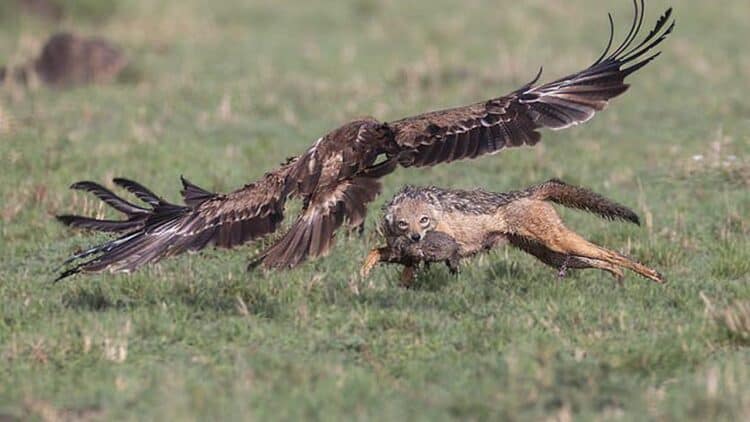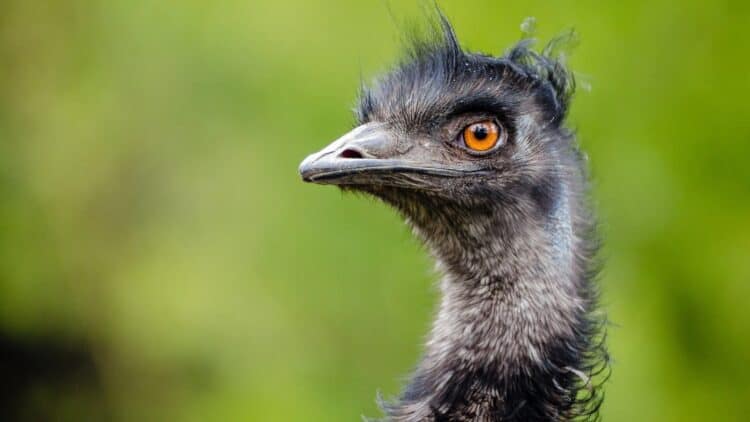A tiny Australian bird, the brown thornbill (Acanthiza pusilla), mimics the hawk warning calls of neighboring bird species to protect its nest from predators such as the pied currawong.
“It’s not superbly accurate mimicry, but it’s enough to fool the predator,” said Dr Branislav Igic of the Australian National University in Canberra, Australia, lead author on the study published in the Proceedings of the Royal Society B.
“I was puzzled because I could hear the alarm calls of robins, honeyeaters and rosellas, but I couldn’t see any. I soon realized that the brown thornbill was mimicking the other species, and we later discovered that they sometimes lie about the type of predator present when defending their nests,” said senior author Prof Robert Magrath, also from the Australian National University.
Pied currawongs (Strepera graculina), which raid the nests and hunt the chicks of brown thornbills, are also prey to goshawks. Although currawongs normally benefit from listening in on hawk alarm calls of other species, thornbills exploit this and turn it against them.
As well as issuing their own hawk alarm call, brown thornbills mimic those of the local species to create the impression of an impending hawk attack, which in turn distracts the pied currawong – a predator 40 times larger than the thornbill – providing thornbill nestlings with an opportunity to escape.
“The enormous size difference between a tiny thornbill and a 0.5 kg goshawk might make it difficult for brown thornbills to mimic hawk vocalizations accurately, limiting them to mimicking the chorus of hawk alarm calls given by small local species instead,” said co-author Jessica McLachlan of the University of Cambridge.
While animals often mimic dangerous or toxic species to deter predators, the brown thornbill is a surprising example of a species mimicking another harmless species to trick a predator.
“As hawks are silent when hunting, the alarm calls of local species may be the only sound that warns of a hawk’s presence,” McLachlan said.
Dr Igic, McLachlan and their colleagues from the Australian National University studied thornbills and currawongs living in and around the Australian National Botanic Gardens in Canberra.
The scientists devised a series of experiments in which they placed stuffed currawongs in front of thornbill nests to test when thornbills use such trickery, followed by experiments testing how currawongs respond to the calls of thornbills.
They found that the thornbills used their own and mimicked hawk alarm calls when their nests are under attack.
They also found that the currawongs delayed attacks for twice as long when mimetic and non-mimetic alarm calls were played together as opposed to non-mimetic calls played alone.
“Distracting a currawong attacking the nest could give older thornbill nestlings a chance to escape and hide in the surrounding vegetation. It’s perhaps the thornbills best nest defence in this circumstance because physical attacks on the much larger currawong are hopeless,” Dr Igic said.
This study is the first to show that birds use vocal mimicry to scare predators.
_____
Branislav Igic et al. 2015. Crying wolf to a predator: deceptive vocal mimicry by a bird protecting young. Proceedings of the Royal Society B, vol. 282, no. 1809; doi: 10.1098/rspb.2015.0798
This article was first published by Sci-News.com on 03 Jun 2015. Lead Image: The brown thornbill (Acanthiza pusilla). Image credit: Patrick K59 / CC BY 2.0.
What you can do
Support ‘Fighting for Wildlife’ by donating as little as $1 – It only takes a minute. Thank you.
Fighting for Wildlife supports approved wildlife conservation organizations, which spend at least 80 percent of the money they raise on actual fieldwork, rather than administration and fundraising. When making a donation you can designate for which type of initiative it should be used – wildlife, oceans, forests or climate.







Leave a Reply